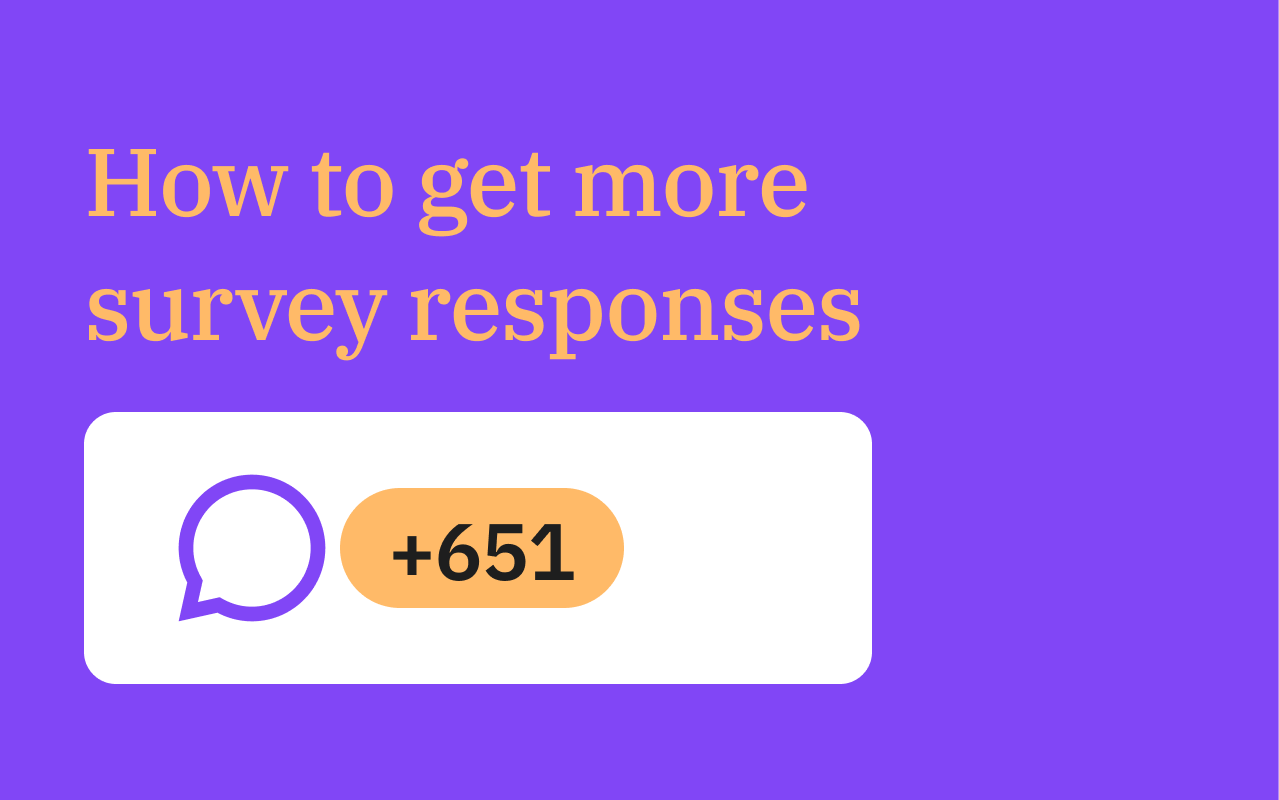If you could comb through all your employees, you’d identify the people across different jobs and at different levels - but also plenty of subgroups and segments within those jobs across the business. And if you could break down these segments and survey them - identifying things like demographics, geography, shared experiences, etc - you’d likely get some quite significantly different responses, experiences, and opinions about your business and what it’s like to work for you. This is segmentation. It is a critical concept in both research and marketing, providing a framework to effectively gather, analyze, and interpret data. By dividing a larger population into smaller, more manageable segments, researchers can gain deeper insights that lead to better decision-making. Now that you understand more about sample size, you can also begin to think about segmentation, and the practice of dividing your target market into approachable clusters, which will allow you to create more personal and effective survey strategies. The Importance of Segmentation for Data Analysis At its core, segmentation involves identifying and categorizing distinct groups within a broader audience based on shared characteristics. These groups can be defined using various criteria such as demographics, behavior, psychographics, or geography. Doing this ensures those conducting any research can pinpoint specific needs or preferences among target audiences, which in turn ensures more efficient and accurate data and insights. Ultimately, segmentation simplifies complex data sets into more digestible groups. When data is segmented, analysts can better uncover trends and patterns in these groups that might not be evident in aggregate data. Having this deeper understanding helps businesses to optimize their strategies and make informed decisions. Types of Segmentation Models Depending on the objectives of your survey and research, different segmentation models can be employed. We’ll talk about the appropriate time to use different segmentation models below, but the most common types are: Demographic Segmentation This is one of the most widely used forms of segmentation, as it categorizes individuals based on quantifiable statistics. This makes it easier to identify trends and preferences. This model divides consumers based on identifiable characteristics such as age, gender, income, education level, and family size. It can also include things like income level, religion, ethnicity, marital status and size of household. Example: A luxury car brand may want to reach high-income individuals aged 35-55, while a toy manufacturer may focus on parents with children aged 2-5. By tailoring marketing messages to address the specific needs and interests of these demographic segments, companies can enhance relevance and appeal. For B2B surveys, the segmentations might look a little different - such as type of industry, size of the business, number of employees, etc. 2. Geographic Segmentation At its most simple level, this type of segmentation identifies where your audience is located and may include categorization such as locations (i.e. zip codes, city, state, country), time zone, language, or population density. By categorizing individuals based on their location, you can create tailored messaging that takes into consideration regional preferences and cultural differences. Example: You are a fast food brand with locations globally, but you localise menu items in certain countries to better resonate with local audiences. By categorizing by location, you can ensure your messaging and marketing efforts are reaching the right audiences - and in the right language - for maximum impact. 3. Behavioral Segmentation This is where you group your customers based on certain behaviors, such as how they might interact with a product. It can help you to identify purchasing habits, brand loyalty, and product usage. It takes into account the actions and behaviors of customers - and by analyzing customer behavior, marketers can identify key trends and patterns. Example: Understanding that a segment of customers frequently purchases your product during holiday sales can lead to more tailored promotional strategies during those periods, which ultimately increase conversions and customer retention. Or, you can use behavioral segmentation to send out a special discount code to potential customers who may have shown interest in your products and signed up to your newsletter via the website, but have not made a purchase yet. 4. Psychographic Segmentation This type of segmentation classifies groups based on the attitudes, values, interests, and lifestyles of individuals. It can also take into account social status, personality traits and various opinions they might hold. It looks beyond surface-level data and demographics to better understand the deeper psychological traits that might influence consumer behavior. Example: You are a health food company targeting fitness enthusiasts, so that you can develop targeted content and campaigns that resonate with customers' lifestyle choices, building stronger connections and fostering brand loyalty. In order to do this, you might want to use segmentation to identify customers who go to the gym regularly, have an interest in wellness products, and regularly purchase wellness products or health foods during their weekly shopping. How to Choose the Right Segmentation Model? So, how do you know which model is right for your purposes? This is a crucial step in setting up effective market research, and you can consider the following factors: What are your research objectives? Clearly define what you hope to achieve from the segmentation process. This will help guide your choice of model. Data availability: Assess the type and amount of data you have access to. Some models require more detailed information than others. Target audience characteristics: Consider what characteristics are most relevant to your audience and business goals. LimeSurvey can help organizations identify the right segmentation model with its all-in-one, adaptable platform that gathers critical data and feedback about what drives various segments of your audience, as well as customizable feedback templates that allow you to receive a wealth of data with a ready-to-use approach. Effective Segmentation with LimeSurvey Segmentation is a vital component of obtaining accurate and insightful data, allowing researchers and marketers to dissect complex data. By implementing these various segmentation models, businesses can target their marketing efforts effectively, which leads to improved customer experiences and enhanced sales. LimeSurvey can help you with your segmentation planning by offering a wide range of customizable survey templates, enabling you to design surveys that precisely target the specific segments you've identified. Whether you’re focusing on demographic, geographic, behavioral, or psychographic segments, LimeSurvey’s templates can be easily tailored to fit your unique needs. Check out our template selection here. When organizations take the time to understand their audience at a deeper level, they position themselves for greater success in fulfilling customer needs and driving business growth.


